Chapter 15: Object Reference
The biggest problem in working with VBA is the enormous number of keywords. This reference chapter makes no attempt to list or describe the more than one thousand keywords. (One thousand keywords at two paragraphs each equals about five hundred pages!) That is the task of the on-line help, which despite its manifest insufficiencies is much preferable to a printed text.
This chapter gives, rather, an overview of about two hundred objects that constantly arise in VBA programming. The most important objects of the Excel, ADO, MS Forms, Office, Binder, Scripting, VBA, and VBE libraries are described in alphabetical order. I have attempted to make clear above all the connections among the various objects and to name the properties and methods that form these connections.
15.1 Object Hierarchy
This section contains several hierarchical lists, in which the logical relationship among VBA objects is represented. These lists are restricted to various segments of the object hierarchy. Do not expect completeness! Alas, this book is too small to contain a complete hierarchical listing of all objects, because the object list contains countless ramifications , which in part lead to a common object, then branch off again, and so on, and so on. A complete object hierarchy would be much too long to satisfy any reasonable requirement of clarity.
In connection with the object hierarchy the concepts of above and below must be clarified. An object that is higher in the hierarchy is placed higher in the following lists and, in the next section, to the left of the basic object. The highest object in the hierarchy is thus the Application object, through whose methods and properties all other objects can be reached. Here is an example: Above the Workbook object lie first Workbooks and then Application , while Sheets and each individual Worksheet lie below.
In the following lists only objects are named, not properties and methods that lead from one object to another. It is sometimes irritating that there are often likenamed objects and methods and like-named objects and properties.
Within the lists the symbol ’ frequently appears. This symbol indicates that at this juncture a further ramification occurs that is represented separately further below.
Excel

Workbook
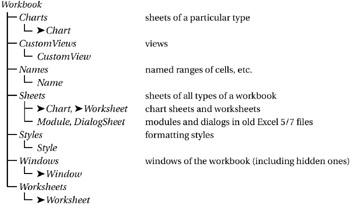
Window
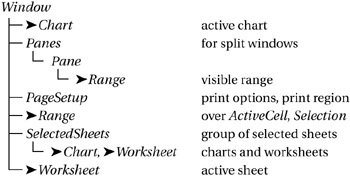
Worksheet
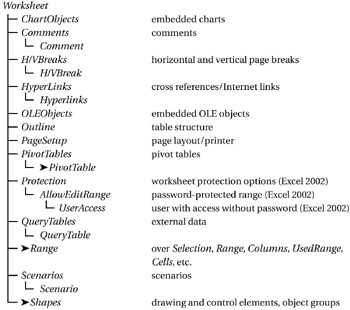
Range

PivotTable
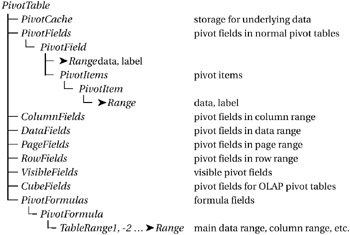
Shape Objects
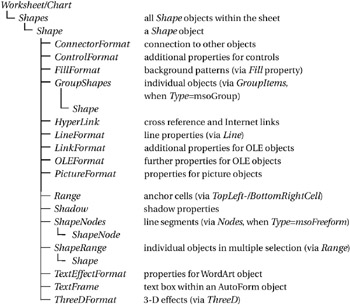
Chart Objects

Database Programming (ADO Library)

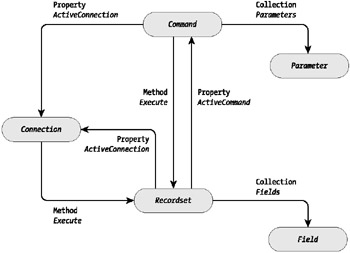
Figure 15-1: Connections among objects
Control of the Development Environment (VBIDE Library)

User-Defined Dialogs and Controls (MS Forms Library)
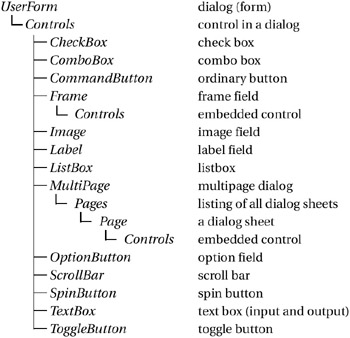
File Access with File System Objects (Scripting Library)

Menu Bars and Toolbars (Office Library)

EAN: 2147483647
Pages: 134